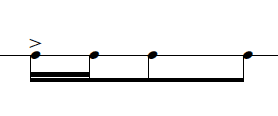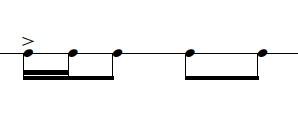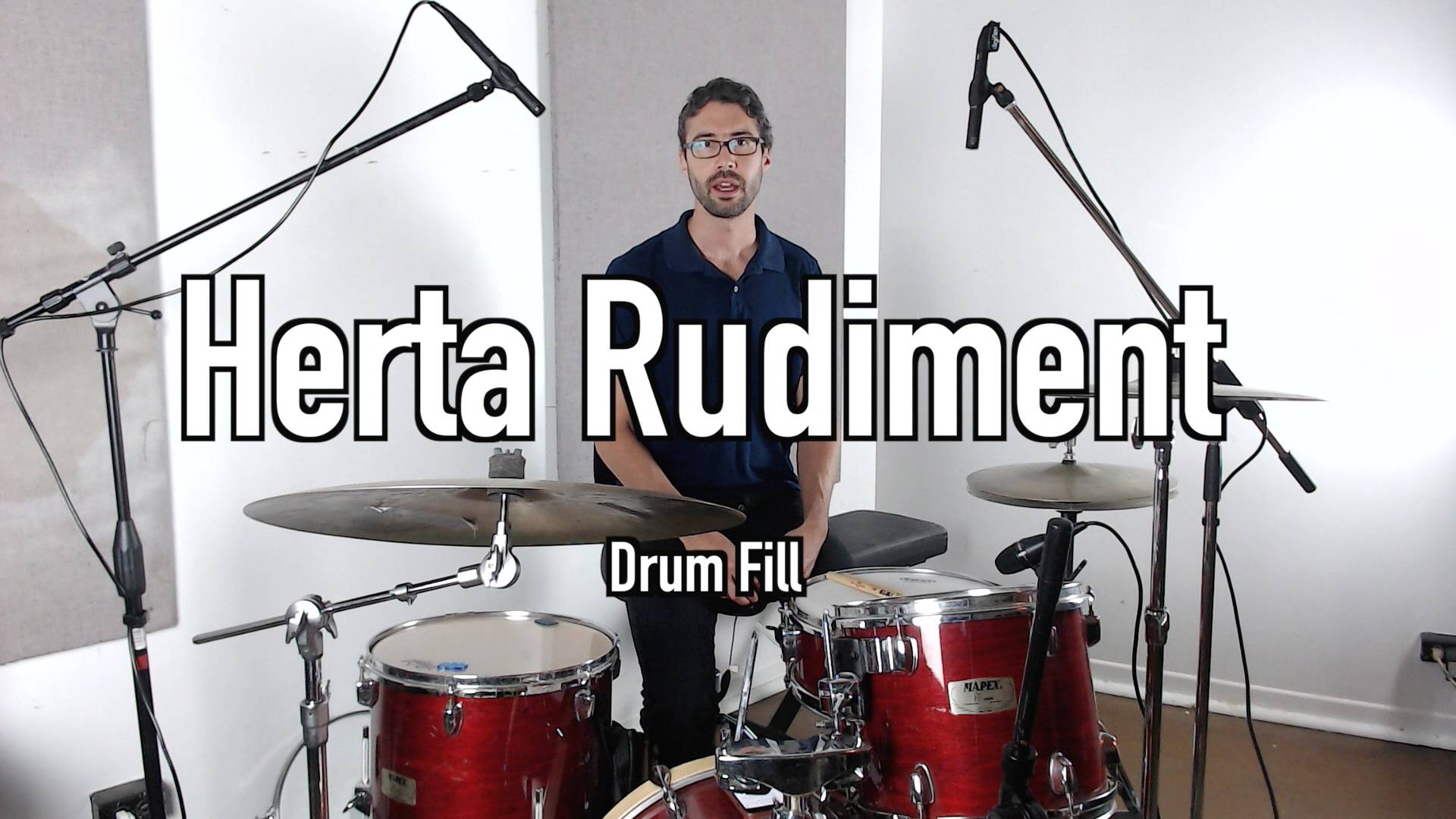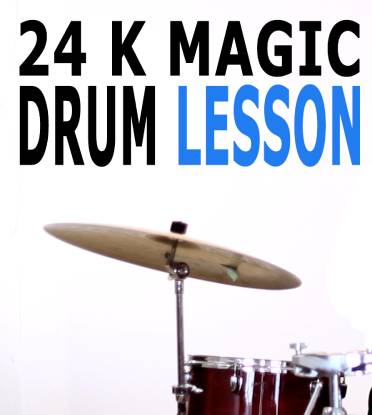In this post, I will teach you how to develop the Herta Rudiment. This rudiment is a single-stroke pattern (alternating R-L-R-L.) The basic version is called the 3 Note Herta which is made up of 2 sixteenth notes followed by 2 eighth notes.

There is also a 4-note Herta, which consists of adding an extra eighth at the end. The 4-Note Herta is handy because it allows you to alternate leading hands. Therefore, interesting patterns can be created using the 3 and 4-note Herta (just as the video demonstrates.)

Using the Moeller Technique
I came across the Herta rudiment while studying with the renowned drum coach Bruce Becker. I was interested in learning how to play the Moeller Technique. As I discovered, the Herta Rudiment is a great way to develop the 2 Note Moeller, which is one of the Fundamental Moeller Technique Exercises.
Rudimental approach vs. the Moeller Technique
Most applications of the Herta use the rudimental approach. Matt Dudley has a great post on how to develop that approach. I found that the Moeller technique offers a better application to the drumset, therefore I prefer working on it that way.
Using the Herta rudiment as a drum fill on the kit
It’s important to think of creative ways to apply rudiments to the drum set. I came up with a cool drum fill that can be played along to any rock beat.
Billy Cobham
Billy Cobham famously played really interesting fill ideas using the Herta. Jim Lisner put together a series of very well-explained videos on applying those ideas to the drumset.
For private drum lessons at my studio in Montreal, Canada or through Zoom or Skype


About the author: Elijah is a university-educated drummer with extensive experience in both teaching and musical performance. Since completing his Bachelor of Music degree at Concordia University in 2010, he has played music across each province in Canada and in more than 20 countries around the world.




